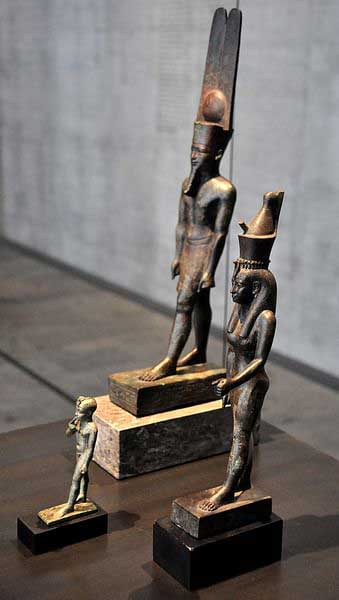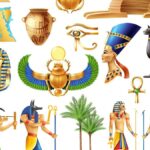A creator god, patron deity of the city of Thebes, and the preeminent deity in Egypt during the New Kingdom.
The King of the Egyptian gods was the greatest of the sun gods. Depictions of Amun represent him as a man with a hawk’s head with a bull’s tail hanging from his tunic.
Amun (Amun-Ra) – God of the sun and air. One of the most powerful and popular gods of ancient Egypt, patron of the city of Thebes, where he was worshipped as part of the Theban Triad of Amun, Mut, and Khonsu. Supreme king of the gods in some periods, though originally a minor fertility god. By the time of the New Kingdom he was considered the most powerful god in Egypt and his worship bordered on monotheism. Other gods were even considered mere aspects of Amun at this time. His priesthood was the most powerful in Egypt and the position of God’s Wife of Amun, given to royal women, almost on par with that of the pharaoh.
He is the supreme god of Egypt (specially new kingdom 1500 BC), his name means “the invisible” and although he’s called so, he was depicted in a form of a man with 2 plumes over his head referring to upper and lower Egypt.
The ancient Egyptians during the new kingdom considered him the king of all gods, a magician and a creator god. They built so many temples for him in Luxor such as Karnak Templ and Luxor Temple.
Before rising to national importance in the New Kingdom (c. 1539–1292 BCE), the god Amon was worshipped locally in the southern city of Thebes. Amon was a god of the air, and the name probably means the “Hidden One.” He was usually represented as a man wearing a crown with two vertical plumes. His animal symbols were the ram and the goose.
After the rulers of Thebes rebelled against a dynasty of foreign rulers known as the Hyksos and reestablished native Egyptian rule throughout Egypt, Amon received credit for their victory. In a form merged with the sun god Re, he became the most powerful deity in Egypt, a position he retained for most of the New Kingdom.
Today the massive temple complex devoted to Amon-Re at Karnak is one of the most visited monuments in Egypt.








